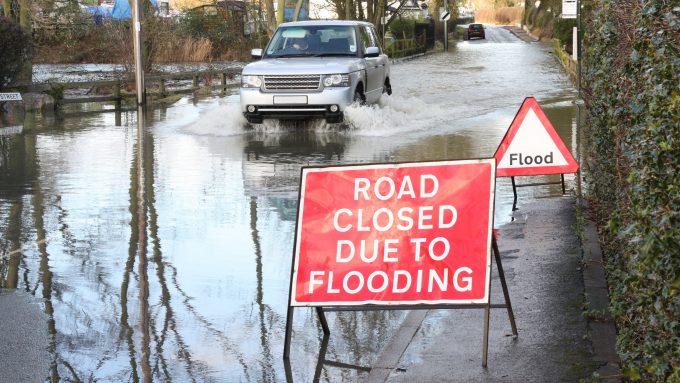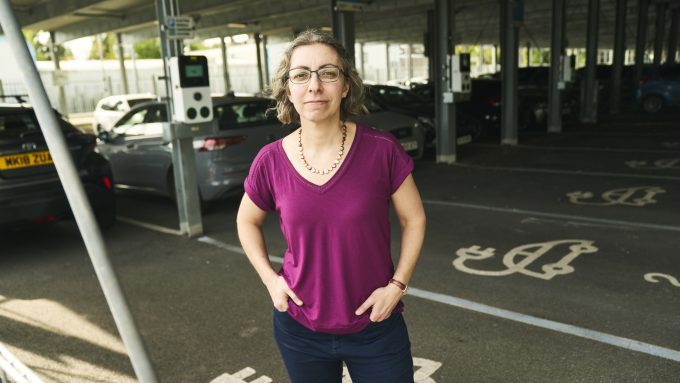
Innovation Brief: Post-Pandemic places Introduction

The chapters in this Innovation Brief highlight how connected places businesses have already risen to the challenge of COVID-19 and explore some of the market opportunities that the pandemic has created or accelerated.
The onset of coronavirus and the drastic, mitigating measures that it has necessitated globally have brought a dire set of challenges for businesses, governments and citizens. While only time will tell the extent of the impact, the spread of COVID-19 shuttered businesses across the globe and continues to threaten many more. Greater even than the economic cost has been the human cost.
That being said, the economic impact has not been universally negative: while sectors that depend on in-person, close contact activities such as education, hospitality, construction and non-essential retail have been badly affected, ‘stay-at-home’ sectors, comprising essential retail, at-home entertainment and virtual communication, have enjoyed an uptick in demand.
Despite its devastating impact on people’s lives and businesses, the COVID-19 pandemic represents an inflection point for connected places and will provide significant opportunities for innovative businesses and place leaders.
Through its hugely disruptive influence, the pandemic has forced the rapid invention of new approaches to the way we interact, live, work and travel – and signals further new opportunities over the medium to long-term.
The pandemic has shown that many barriers to innovation are molehills masquerading as mountains
- Drones are being trialled to deliver essential supplies to hospitals in the Isle of Wight. Outside UK, drones are being used to sanitise less accessible areas, such as in India. In China, the e-commerce firm JD has developed a drone program that drop parcels to isolated areas
- Several innovative mobile applications (such as “GoCoronaGo” to “Sampark-o-Meter” in India) have been developed for contact tracing, estimating risk of encountering an infected person, and for tracking quarantine violations
- Smart helmets are being used by the police in China to identify anyone with high fever within a five-meter radius
- 3D-printed devices that adapt door handles for hands-free opening are being developed to help people avoid touching handles, and
- Process automation is being used by local councils to improve the delivery of their services such as the distribution of school meal vouchers.
What is particularly interesting here is that COVID-19 has opened up an opportunity for innovations that were not yet commercially successful to rapidly move into a changed market. What that illustrates though is that a lot of people were persevering with innovations for which, at the time, there was no market – a powerful argument to drive a concerted re-commitment to innovation across a broad set of capabilities, and not to dial it back.
COVID-19 has made us adopt news ways of doing things – some of these will outlast the pandemic.
COVID-19 has had a huge impact on the way we live, work, play, buy and consume things. Some of these new ways will last only as long as the pandemic does. Others however, will likely become ingrained in our lifestyles, either out of habit after months of lockdown and social distancing, or by positive choice. How to satisfy these post-pandemic behaviours and habits will continue to be a focus for many firms as lockdown continues to ease and restart begins in earnest. Businesses with existing propositions well-suited for a post-COVID era are particularly optimistic: 72% of companies surveyed by Connected Places Catapult believe the current situation to be an opportunity for their business.
The pandemic has given us a glimpse of the future we could achieve if emissions targets were reached.
Since the beginning of the lockdown, the UK’s daily carbon dioxide emissions have decreased by 36%. Globally, daily emissions decreased by as much as 17% during the lockdown’s peak in April, compared to daily average in 2019.
This taste of life in cleaner and quieter environments has led many to advocate for a ‘green recovery’, with stimulus investments and support for ailing sectors linked to efforts to realise net zero targets. As the Economist observed in May,“Getting economies back on their feet is a circumstance tailor-made for investment in climate-friendly infrastructure that boosts growth and creates new jobs.”
Place leaders are likewise clear on the opportunity to tie economic recovery to environmental improvements. The Global Mayors Covid-19 Recovery Task Force has put tackling air pollution and climate degradation high on the list to achieve a climate-friendly economic recovery from the pandemic. And the public agree: two-thirds of Britons believe Climate Change to be as serious as COVID-19 and say they want it prioritised in recovery (Ipsos MORI, 2020)13. The market opportunity for ‘green recovery’ solutions is therefore significant and businesses with solutions which will help places realise both objectives will be well placed to benefit from the increased public and political interest.
Navigating the new normal
From data-driven tools which drive agility and transparency in planning and development, to e-scooters and apps which help you get about smoothly, ‘smart buildings’ which respond to the needs of occupiers, or drones and delivery robots which take cars off the roads, connected places innovations enable smarter, more user-friendly, more resource efficient, more responsive services and user experiences. They are central to releasing the productivity of towns and cities, and to accelerating the transition to net zero. Connected place innovations are also central to meeting the many new and emerging needs of post-pandemic places – starting with managing the risk (and fear) of contagion through to longer term transformations.
The chapters in this Innovation Brief highlight how connected places businesses have already risen to the challenge of COVID-19 and explore some of the market opportunities that the pandemic has created or accelerated. These opportunities have been selected based on:
- Relevance to the connected places market– Opportunities that deliver greater mobility and access, promote smarter use of land, make buildings more energy efficient, improve decision making, foster new public spaces and points of human interaction
- Market Value –Opportunities that are expected to have a sizeable market value by 2025
- Green Potential – Opportunities that will help the UK realise its net zero and decarbonisation targets
- Impact Longevity – Opportunities that go beyond addressing short-term challenges and are expected to stay relevant even after the pandemic is over.
To aid navigation, we have grouped the opportunities we have identified into six distinct but interconnected domains.





